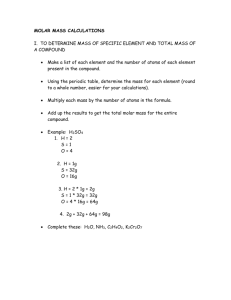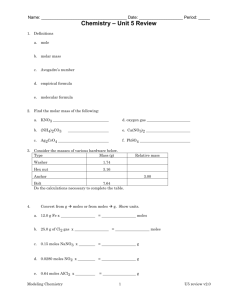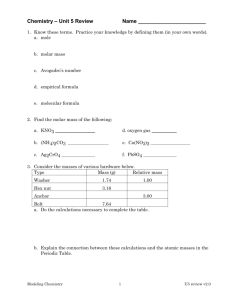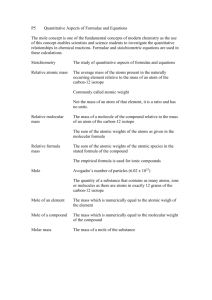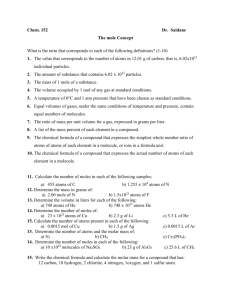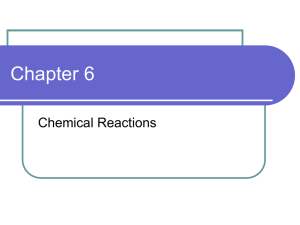Stoichiometry Hand
advertisement
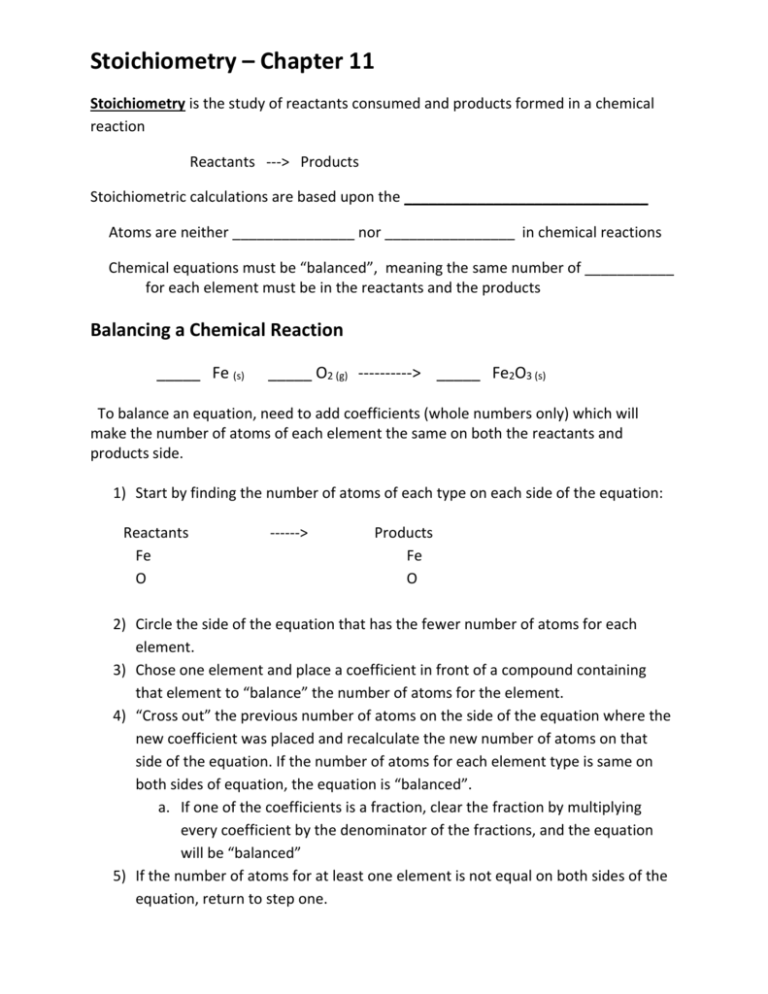
Stoichiometry – Chapter 11 Stoichiometry is the study of reactants consumed and products formed in a chemical reaction Reactants ---˃ Products Stoichiometric calculations are based upon the ______________________________ Atoms are neither _______________ nor ________________ in chemical reactions Chemical equations must be “balanced”, meaning the same number of ___________ for each element must be in the reactants and the products Balancing a Chemical Reaction _____ Fe (s) _____ O2 (g) ----------˃ _____ Fe2O3 (s) To balance an equation, need to add coefficients (whole numbers only) which will make the number of atoms of each element the same on both the reactants and products side. 1) Start by finding the number of atoms of each type on each side of the equation: Reactants Fe O ------˃ Products Fe O 2) Circle the side of the equation that has the fewer number of atoms for each element. 3) Chose one element and place a coefficient in front of a compound containing that element to “balance” the number of atoms for the element. 4) “Cross out” the previous number of atoms on the side of the equation where the new coefficient was placed and recalculate the new number of atoms on that side of the equation. If the number of atoms for each element type is same on both sides of equation, the equation is “balanced”. a. If one of the coefficients is a fraction, clear the fraction by multiplying every coefficient by the denominator of the fractions, and the equation will be “balanced” 5) If the number of atoms for at least one element is not equal on both sides of the equation, return to step one. Mole Ratio Mole ratios are calculated by taking the ratios of the coefficients in a balanced chemical equation Using the balanced equation: 2 Al (s) + 3 Br2I ---˃ 2 AlBr3 (s) Calculate the mole ratios: Al Al Br2 AlBr3 Br2 AlBr3 Given the number of moles consumed or produced for only _______ compound in a balanced chemical reaction, the number of moles for every other compound involved in the reaction can be calculated using mole ratios. Using the chemical equation above, if 4 moles of Al are consumed, how many a) Moles of Br2 consumed? ______________________ b) Moles of AlBr3 are produced? _______________________ Calculating the Mass of Compounds Involved in a Chemical Reaction 1) Given the mass of a compound involved in a reaction, calculate the number of moles involved for that compound using the compound’s molecular molar mass. 2) Use the mole ratios calculated from the balanced equation’s coefficients to calculate the number of moles involved for all remaining compounds in the reaction. 3) Convert the calculated number of moles for each compound to mass by multiplying each mole amount by the appropriate molecular molar mass. Example: Methane gas undergoes combustion with oxygen to form carbon dioxide and water. If 48 grams of methane is combusted, how many grams of oxygen will be consumed as well as how many grams of carbon dioxide and water will be produced? 1) Balance the equation: ______ CH4 (g) + _______ O2 (g) ------˃ _______ CO2 (g) + ______H20 (g) 2) Calculate the number of moles of CH4 that were consumed from the mass of methane consumed. 3) Using the mole ratios of each compound to methane, calculate the number of moles of each compound consumed or produced. 4) Calculate the mass of each compound consumed or produced by multiplying the moles of each compound by that compound’s molecular molar mass.
